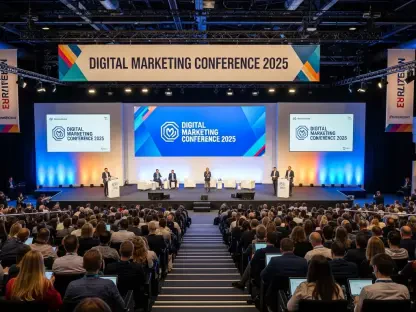The Evolving Landscape of Digital Content Marketing
In an era where digital marketing is often defined by the rapid churn of viral videos and fleeting social media posts, the sheer volume of ephemeral content can be staggering, with platforms generating billions of snippets daily that vie for fleeting attention. Yet, amidst this whirlwind, a quieter but enduring force persists in shaping online engagement. Articles, whether in the form of blog posts, comprehensive guides, or thought leadership pieces, continue to anchor strategies for businesses aiming to connect meaningfully with audiences, drive consistent traffic, and build lasting authority in crowded digital spaces.
Unlike short-lived formats, articles offer depth and permanence, providing a platform for detailed storytelling and information sharing that resonates over time. Their role transcends mere content creation, acting as foundational elements in establishing a brand’s voice and expertise. This staying power is evident as companies leverage written content to cut through the noise, fostering trust and engagement in ways that transient posts often cannot match.
The content marketing industry, valued at a significant $63 billion as of recent estimates, underscores the importance of written material, with a substantial portion of budgets dedicated to articles. This investment reflects a recognition of their impact, as businesses allocate resources not just for creation but for strategic distribution and optimization. As the digital landscape evolves, articles remain a critical tool, balancing immediacy with long-term value in an increasingly competitive environment.
The Strategic Power of Articles in Modern Marketing
Key Trends Driving Article Relevance
A notable trend shaping the relevance of articles is the growing appetite for long-form content, particularly pieces exceeding 1,000 words, which studies show generate higher traffic and social shares compared to shorter formats. This shift highlights a user preference for depth over brevity, as audiences seek comprehensive insights to navigate complex topics or make informed choices. Marketers are responding by crafting detailed content that addresses nuanced needs, ensuring visibility in search results and sustained engagement.
User behavior is also evolving toward valuing data-rich, thoughtful content that supports decision-making processes. With consumers spending more time researching before committing to purchases or partnerships, articles that provide actionable information or expert perspectives stand out as trusted resources. This trend aligns with the broader push for authenticity, where well-researched content often trumps superficial updates in capturing audience loyalty.
Search engine algorithms further amplify the importance of quality articles, with updates like Google’s March 2024 core update emphasizing standards such as Experience, Expertise, Authority, and Trust (EEAT). These guidelines reward content that demonstrates credibility and relevance, pushing marketers to prioritize substance over sheer volume. As a result, articles crafted with these principles in mind are more likely to secure prominent rankings, driving organic reach in a landscape where visibility is paramount.
Market Insights and Growth Projections
Data from industry reports reveals the central role of articles, with findings indicating that 71% of B2B marketers consider them a foundational element of their content strategies. This reliance underscores their versatility, serving purposes from lead generation to customer education. As businesses recognize the measurable impact of written content, its integration into broader marketing frameworks becomes non-negotiable.
Looking ahead, the content marketing industry is expected to expand significantly, with projections estimating a rise to $137 billion by 2026, and articles anticipated to account for 30–35% of allocated budgets during this period. This growth signals a sustained commitment to written formats, driven by their proven effectiveness in achieving both short-term goals and long-term brand equity. The financial stake reflects confidence in articles as a scalable asset for diverse sectors.
Investment is also shifting toward specialized writing talent, particularly in niche areas such as fintech and healthcare, where expertise commands premium rates. Companies are increasingly seeking writers who can deliver authoritative content tailored to specific audiences, ensuring relevance in highly technical or regulated fields. This trend points to a future where quality and specialization will define the competitive edge of article-driven strategies.
Challenges in Leveraging Articles for Digital Success
The sheer volume of content published daily poses a significant hurdle, with millions of blog posts flooding the internet each day, making it difficult for any single piece to stand out. This saturation risks drowning even well-crafted articles in a sea of noise, requiring marketers to adopt innovative approaches to capture attention. Differentiation becomes a pressing concern as businesses grapple with maintaining visibility.
Another challenge lies in the rise of AI-generated content, which, while efficient, often lacks the authenticity and depth needed to meet stringent quality standards. The tension between leveraging technology for speed and ensuring human-driven insight for credibility creates a balancing act for content creators. Over-reliance on automated tools can erode trust, pushing brands to prioritize genuine narratives that resonate on a personal level.
To address these obstacles, strategies such as incorporating multimedia elements like infographics or embedding original research can elevate the value of articles. These additions not only enhance engagement by breaking textual monotony but also position content as a unique resource worth revisiting. By focusing on innovation and user-centric design, marketers can navigate the crowded digital space and amplify the impact of their written output.
Navigating Quality and Compliance in Content Creation
Search engine guidelines play a pivotal role in shaping content strategies, with platforms like Google placing a premium on relevance, trustworthiness, and user-focused design. These standards demand that articles not only inform but also align with the intent behind user queries, ensuring they serve a clear purpose. Adhering to such criteria is essential for maintaining visibility in an algorithm-driven ecosystem.
The emphasis on EEAT principles further underscores the need for credibility, as search engines reward content that showcases verifiable expertise and authority. This focus compels creators to invest in thorough research and transparent sourcing, building trust with both algorithms and audiences. Articles that fail to meet these benchmarks risk being sidelined, highlighting the importance of strategic alignment with evolving expectations.
Editorial oversight emerges as a critical component in this context, ensuring that content upholds integrity while complying with digital standards. Rigorous review processes and adherence to ethical guidelines help mitigate risks of misinformation or irrelevance, preserving a brand’s reputation. As regulations and user expectations tighten, maintaining high standards through consistent quality control becomes a non-negotiable aspect of effective content creation.
The Future of Articles in Digital Marketing
Emerging trends suggest a dynamic interplay between AI-driven efficiency and human insight in the production of articles, with technology streamlining workflows while personal expertise ensures depth. This hybrid approach aims to capitalize on the strengths of both, allowing for scalability without sacrificing authenticity. As tools evolve, their integration into content strategies will likely redefine creation timelines and resource allocation.
Potential disruptors, such as algorithm shifts or changing consumer preferences toward hyper-personalized content, could reshape how articles are crafted and consumed. Staying ahead of these changes will require agility, with marketers needing to anticipate audience needs and adapt formats accordingly. The demand for tailored, authentic narratives is expected to grow, pushing brands to refine their storytelling techniques.
Growth opportunities also lie in advanced SEO tactics, such as topic clusters that organize content into interconnected hubs, enhancing discoverability and user experience. Additionally, evergreen content retains its value as a long-term asset, offering sustained traffic with minimal ongoing investment. These areas signal a future where articles remain integral, evolving alongside technological and behavioral shifts to maintain their strategic relevance.
Conclusion: Articles as a Cornerstone of Sustainable Growth
Reflecting on the insights gathered, it becomes evident that articles hold a central position in digital marketing, driving engagement, organic traffic, and brand authority with unmatched consistency. Their ability to deliver lasting value through evergreen formats stands out as a key differentiator compared to transient tactics like paid advertisements, which often fade quickly from view.
Moving forward, businesses are encouraged to prioritize investment in quality, intent-driven content that aligns with user needs and search engine standards. Exploring innovative formats, such as integrating interactive elements or leveraging data storytelling, emerges as a practical step to enhance impact. By focusing on authenticity and strategic depth, companies can position articles as not just a tool for visibility but a foundation for enduring trust and growth in the digital realm.









